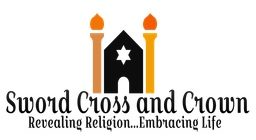
The Roots of Modern Pentecostalism…A New Day of Pentecost, or a New Move of Deception?
Jesus continued to give words of instruction and comfort to His disciples – “’I still have many things to say to you, but you cannot bear them now. However, when He, the Spirit of truth has come, He will guide you into all truth; for He will not speak on His own authority, but whatever He hears He will speak; and He will tell you things to come. He will glorify Me, for He will take of what is Mine and declare it to you. All things that the Father has are Mine. Therefore I said that He will take of Mine and declare it to you.’” (John 16: 12-15)
When Jesus said these words to His disciples, they did not yet understand what Jesus’ death and resurrection would mean, not only to the Jewish people, but to the whole world. Scofield interprets the above verses as Jesus’ “preauthentication” of the New Testament Scriptures. Jesus “outlined” the elements of New Testament revelation: 1. It would be historical (the Spirit would bring all things that Jesus said to them to their remembrance – John 14: 26). 2. It would be doctrinal (the Spirit would teach them all things – John 14: 26). and 3. It would be prophetic (the Spirit would tell them things to come – John 16: 13)(Scofield 1480).
Consider Paul’s warning to Timothy in his letter to him about how important the Scriptures are to us – “But evil men and imposters will grow worse and worse, deceiving and being deceived. But you must continue in the things which you have learned and been assured of, knowing from whom you have learned them, and that from childhood you have known the Holy Scriptures, which are able to make you wise for salvation through faith which is in Christ Jesus. All Scripture is given by inspiration of God, and is profitable for doctrine, for reproof, for correction, for instruction in righteousness, that the man of God may be complete, thoroughly equipped for every good work.” (2 Tim. 3: 13-17)
After His resurrection, when He was with His disciples in Jerusalem, we learn from the book of Acts what Jesus told them – “And being assembled together with them, He commanded them not to depart from Jerusalem, but to wait for the Promise of the Father, ‘which,’ He said, ‘you have heard from Me; for John truly baptized with water, but you shall be baptized with the Holy Spirit not many days from now.’” (Acts 1: 4-5) Jesus would join His followers to Himself through the baptism of the Holy Spirit. The word ‘baptized’ in this context means ‘uniting with.’ (Walvoord 353)
The modern Pentecostal Movement began at a small Bible school in Kansas in 1901 with what it’s founder, Charles Fox Parham, considered a “new” Pentecost. The students, after studying the book of Acts, concluded that speaking in tongues was the “true” sign of Spirit baptism. It was claimed that after the laying on of hands and prayer, a young woman named Agnes Ozman spoke Chinese for three days, followed by other students speaking in at least twenty different languages. However, there are differing versions of what really happened. The languages that they supposedly spoke, were never verified as actual languages. When they wrote down these “languages,” they were revealed as incomprehensible, and not actual languages. Parham claimed to be able to send missionaries to foreign countries without any language training; however, when he did so, none of the natives were able to understand them. Over time, Parham himself was discredited. He predicted that his new “Apostolic Faith” movement (considered by many at the time to be a cult) would massively grow, but he was soon forced to close his Bible school. Some of his followers beat a disabled woman to death in Zion, Illinois, while trying to “drive the demon of rheumatism” out of her. A young girl in Texas died after her parents sought healing through Parham’s ministry, rather than through medical treatment. This event led Parham to leave Kansas and go to Texas where he met William J. Seymour, a 35 year old African American who had become a follower of Parham. Seymour later initiated the Azusa Street Revival in 1906 in Los Angeles. Parham was later arrested in San Antonio on charges of sodomy. (MacArthur 19-25)
MacArthur made an important point about Parham when he wrote – “Like the majority of preachers affiliated with the Holiness Movement in that era, Parham was attracted to doctrines that were marginal, novel, extreme, or totally unorthodox.” (MacArthur 25) Parham also advocated other unorthodox ideas such as the idea that the wicked would be completely annihilated, and not suffer eternal torment; various universalist ideas; an unusual view of man’s fallen nature and sin’s bondage; the idea that sinners could redeem themselves by their own efforts along with God’s help; and that sanctification was a guarantee of physical healing, negating the need for any medical treatment. Parham was also a teacher of Anglo-Israelism, the idea that the European races had descended from the ten tribes of Israel. Parham also supported the Ku Klux Klan, and the idea that Anglo-Saxons were the master race. (MacArthur 25-26)
In challenging modern day Pentecostalism, MacArthur points out that the original day of Pentecost did not come from an aberrant view of salvation, or result in eyewitness accounts that contradicted each other. The gift of tongues on the day of Pentecost enabled the disciples to speak in known languages, as they proclaimed the gospel. (MacArthur 27-28)
RESOURCES:
MacArthur, John. Strange Fire. Nelson Books: Nashville, 2013.
Scofield, C.I., ed. The Scofield Study Bible. Oxford University Press: New York, 2002.
Walvoord, John F., and Zuck, Roy B. The Bible Knowledge Commentary. Victor Books: USA, 1983.



